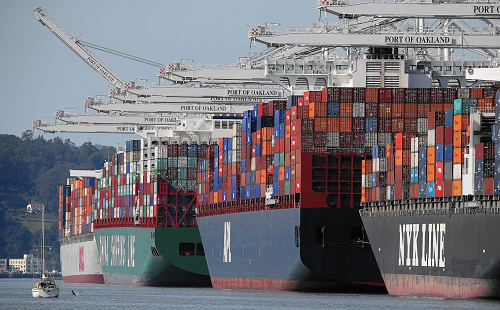
February 11, 2022 – A report from Supply & Demand Chain Executive says that imports at the nation’s most congested container ports are expected to grow in the first half of 2022.
“We’re not going to see the dramatic growth in imports we saw this time last year, but the fact that volumes aren’t falling is a clear sign of continued consumer demand,” NRF VP for supply chain and customs policy Jonathan Gold says. “Last year set a new bar for imports, and the numbers remain high as consumers continue to spend despite COVID-19 and inflation. The slowdown in cargo growth will be welcome as the supply chain continues to try to adapt to these elevated volumes. Unfortunately, many experts expect ongoing disruptions throughout 2022 for a variety of reasons.”
Congestion has stayed consistent on both coasts; the Port of Los Angeles alone has about 40 ships waiting to dock. With more ships arriving each day and further delays pushing the unloading of cargo until the following month, shifts in import patterns can be difficult to follow. Global Port Tracker reports that U.S. ports are expected to handle 13 million TEUs during the first half of 2022, up 1.5% from the 12.8 million TEUs from the same period in 2021.
“With Lunar New Year factory closings in Asia this month and the consequent drop in export production, North American terminals will have an opportunity to reduce existing congestion,” Hackett Associates founder Ben Hackett says. “Nonetheless, backups cannot be erased quickly as long as terminals continue to face a lack of space brought on by the supply chain’s inability to efficiently transfer cargo out of the terminals to its end destinations. A shortage of equipment, worker availability and storage space at distribution centers and warehouses across the country remains problematic, as does the export of empty containers back to Asia.”
